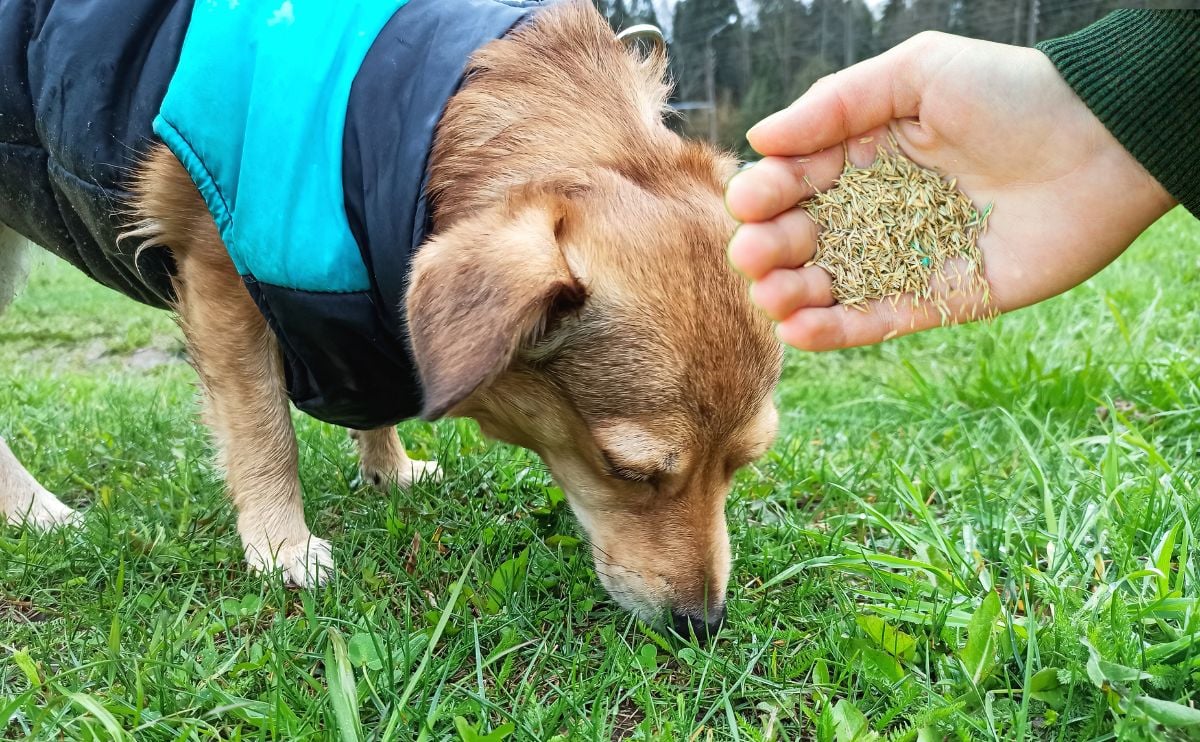When you purchase through links on our site, we may earn a commission. Here’s how it works.

You’ve likely heard the adage that 1 year for a dog is equal to 7 human years. Well, we did some digging, and it turns out this is an oversimplified way to calculate your dog’s age in human years. In fact, there are a few different methods — and some recent data may give us an even better way to convert dog years to human years.
Why Isn’t The 7:1 Rule Accurate?
As many have pointed out, if 1 human year really equaled 7 dog years, then humans would be able to reproduce by age 7 and people could live past 150. So, where did this questionable rule come from?
The exact origin is unknown, but this formula became popular in the 1950s and has persisted since then. This ratio is likely based on the average lifespan of humans being 70 years and dogs being 10 years. But it’s not based on anything scientific.
One of the major problems with the 7-to-1 rule is that it doesn’t take into account that the rate at which dogs age differs from humans and even that small and large-sized dogs age differently.
Dogs Age Faster Early On

Dogs can reach sexual maturity around age 1 because they age much faster during the first year of life than humans do. A general rule of thumb that some experts follow:
- Dogs age 15 human years during their first year.
- The second year of life for dogs equals 9 human years.
- Then, every subsequent year is equivalent to 5 human years.
Even though this is a more accurate way than the 7:1 rule to calculate a dog’s age in human years, it’s still a rough estimate because it doesn’t factor in breed and size.
Size & Breed Matter Too
Experts know that larger dogs age at a faster rate than smaller dogs (although the reason for this difference is still unknown). But it explains why the life expectancy of small dogs is longer than large dogs. Small dogs are considered senior around 7 years old, while large dogs reach senior status around 5 or 6, according to the American Veterinary Medical Association.
The New Calculation Formula
Scientists have developed a new formula for calculating dog years to human years based on DNA research. The 2019 study by a team at the University of California San Diego (UCSD) looked at how dog DNA changes over time, a process called DNA methylation.
DNA methylation is a relatively new concept in human aging research. Researchers found that in humans, our DNA gets chemically modified over our lifetime by disease, a poor lifestyle and other environmental factors. One of these modifications involves the addition of methyl groups that stick to specific DNA sequences over time.
These methyl groups don’t change our DNA itself; rather they attach to the genetic molecule and can turn certain genes on or off. Researchers have found that methylation occurs at a relatively steady rate as humans age, which allows them to estimate a person’s age, a process called an epigenetic clock.
How Does The Epigenic Clock Formula Work?

To compare dogs’ epigenetic clocks to those of humans, this UCSD team performed targeted DNA sequencing in 104 Labrador Retrievers between the ages of 4 weeks and 16 years old.
They found that the epigenetic clock of dogs differs significantly during the first year of life, but after that, it begins to match up with the human epigenetic clock. So these results allowed them to derive a formula to adjust a dog’s age to human years after a dog turns one. Of course, this formula requires a bit more math than the 7:1 rule.
You multiply the natural logarithm (ln) of a dog’s age by 16 and then add 31 [16ln(dog age) + 31 = human age]. Use this natural logarithm calculator to do the math for you.
So if your dog is 2 years old, simply enter “2” into the logarithm calculator, then take that result (0.69), multiply it by 16 and add 31. According to this formula, a 2-year-old dog would be equivalent to a 42-year-old human. But then a dog’s aging rate slows down a lot after the early years — and this formula takes that into account. For instance, a 4-year-old dog is 53 in human years, and a 10-year-old dog is 67.8 in human years.
The natural logarithm is basically the reverse of the exponential hockey stick you are probably familiar with. It advances very rapidly at the beginning and then plateaus rather quickly, increasing at a very gradual rate over time after the initial sharp rise.
Keep in mind that this study only looked at one breed, so it’s not a tried and true formula for all dogs. However it’s more scientifically based than other calculation methods, so it likely gives you a better idea of your dog’s age in human years.
What’s Your Dog’s Life Expectancy?
Want to know how long your dog will live? As we mentioned above, a dog’s life expectancy differs based on his size, but other factors also determine a dog’s lifespan. Learn about these factors in our article on the life expectancy of dogs. We also give you the average life expectancies for the most popular breeds. If you own a rescue dog, we also offer an article that provides guidance on determining your dog’s age.
Tagged With: Aging

